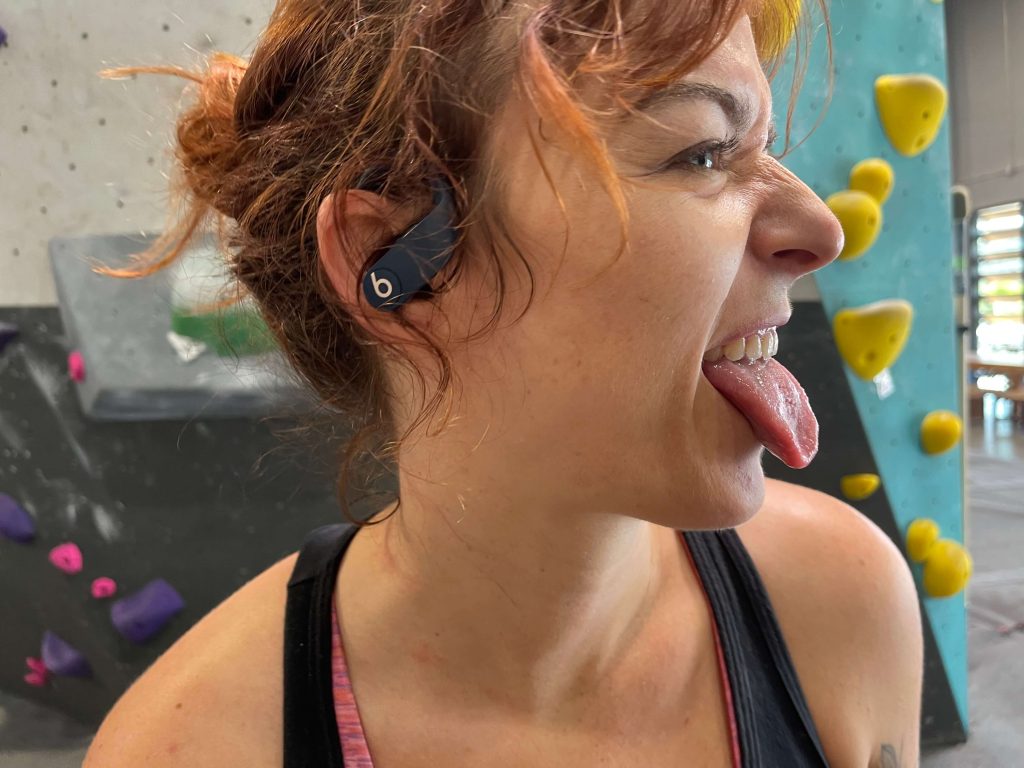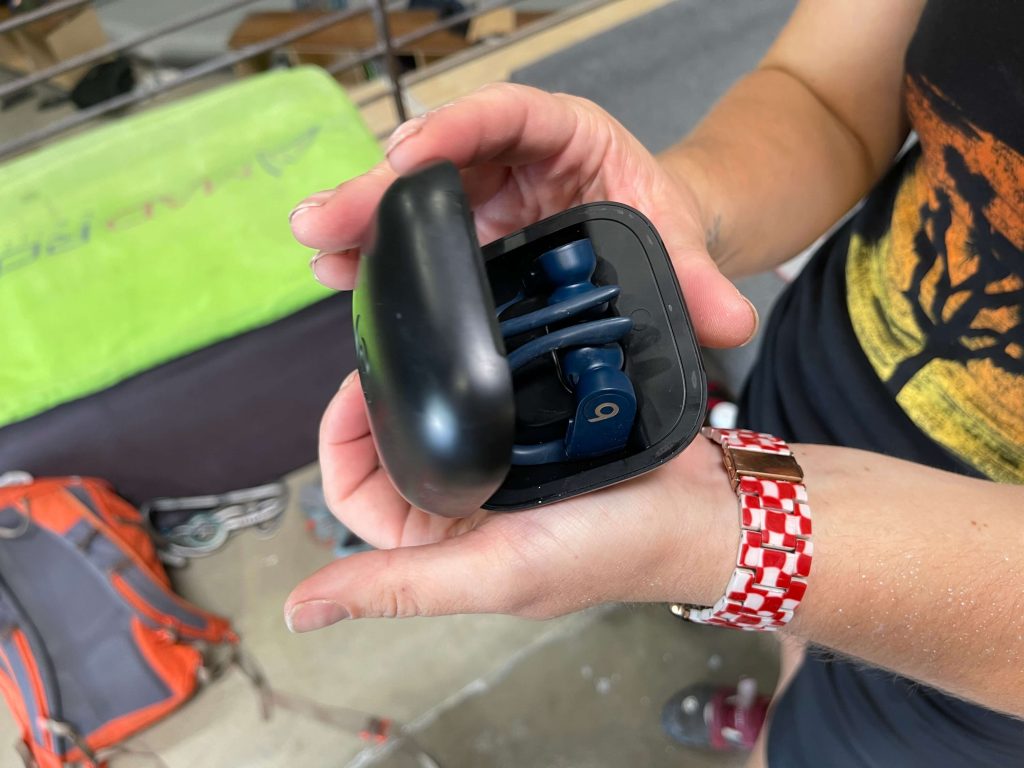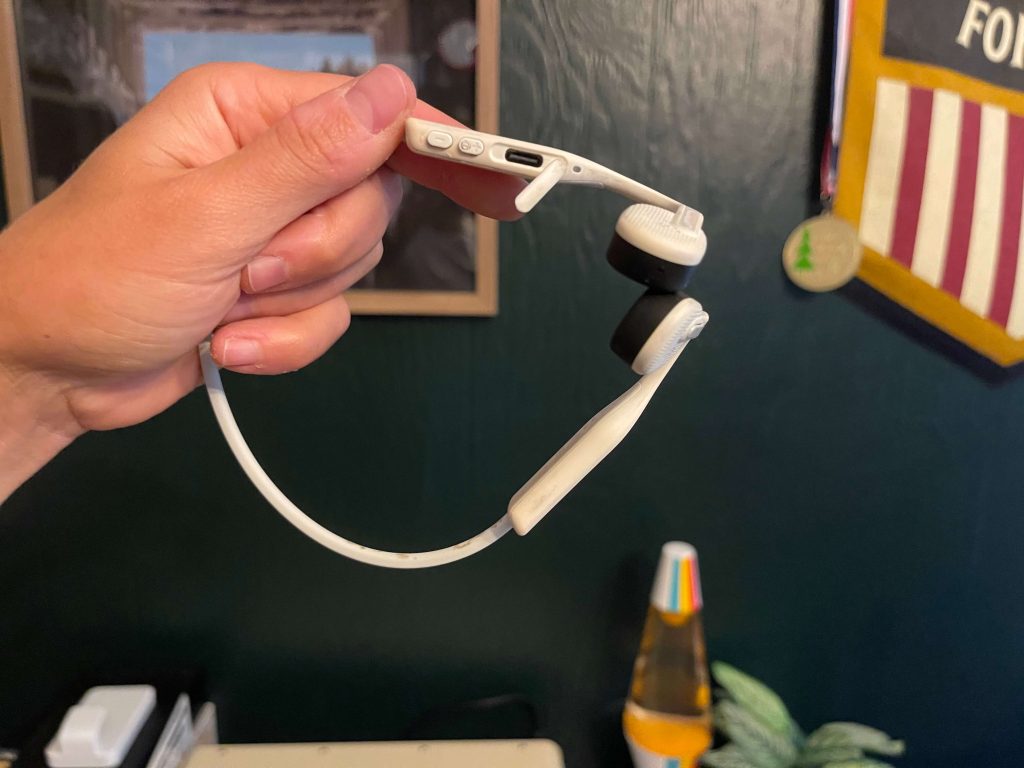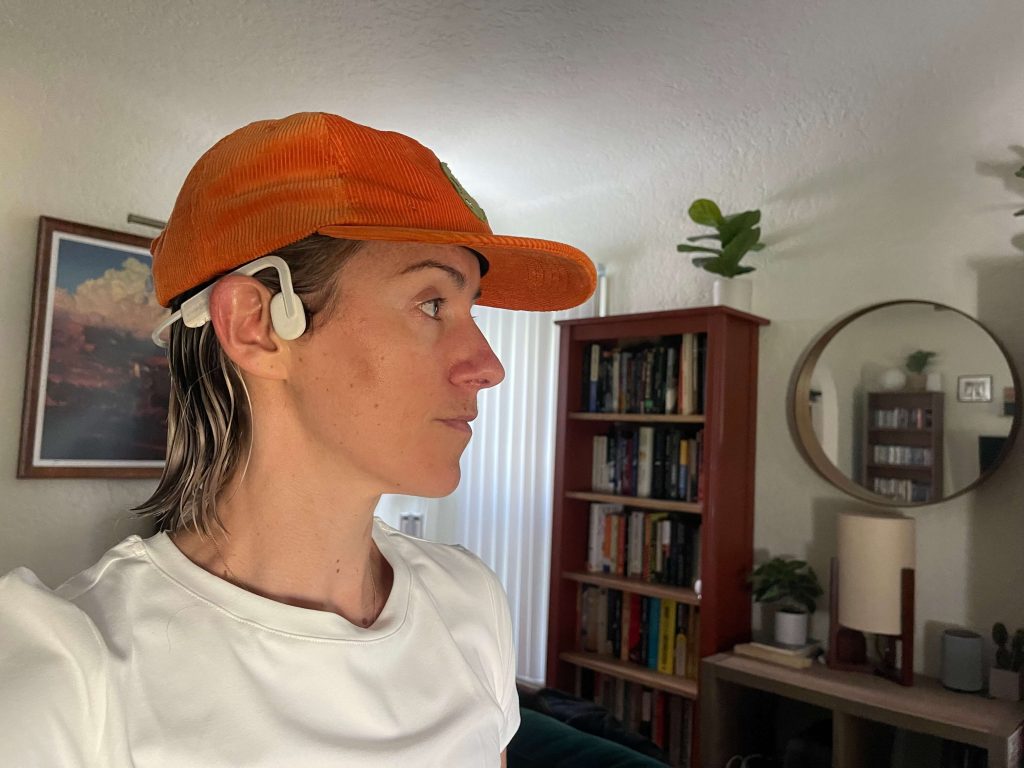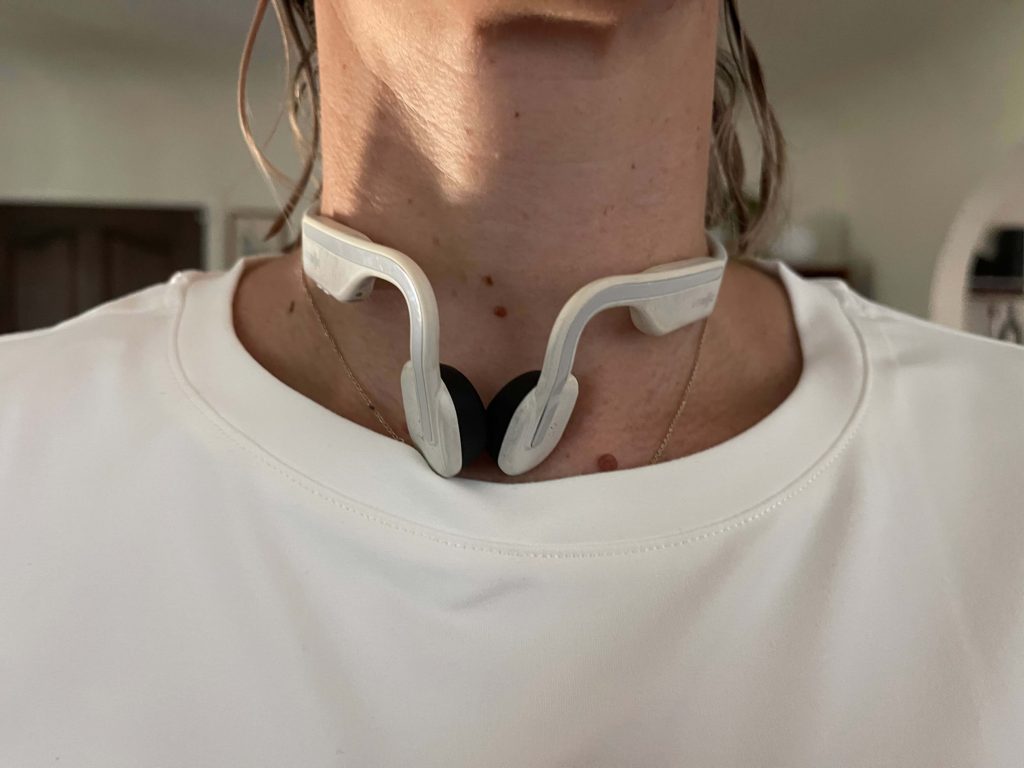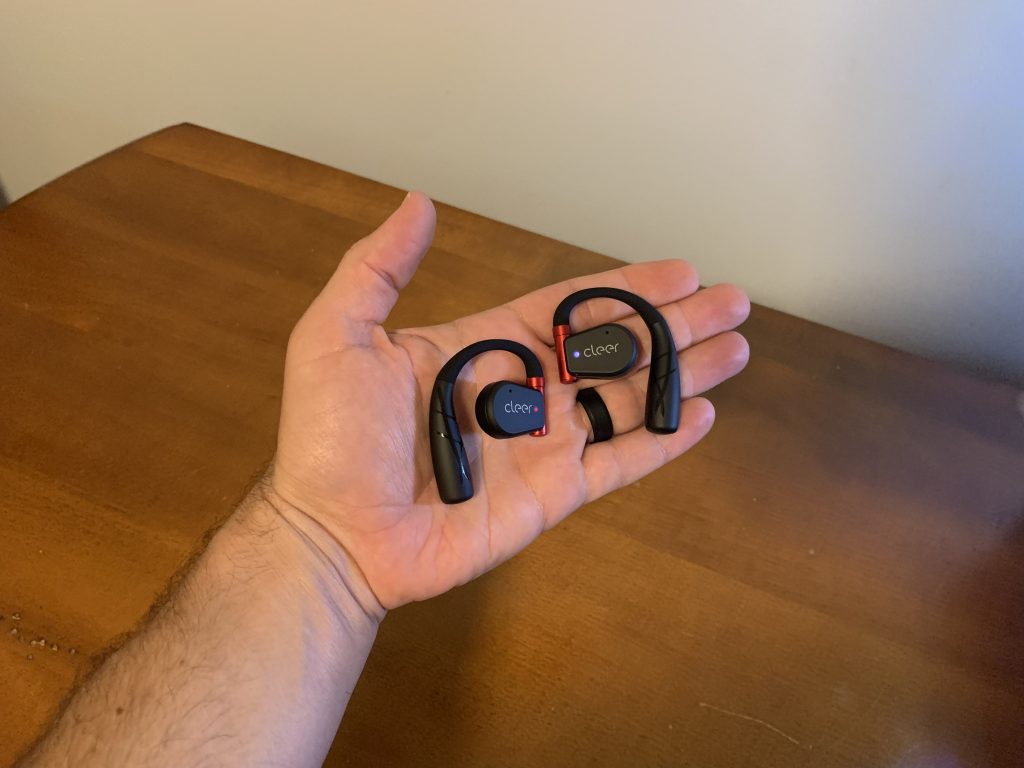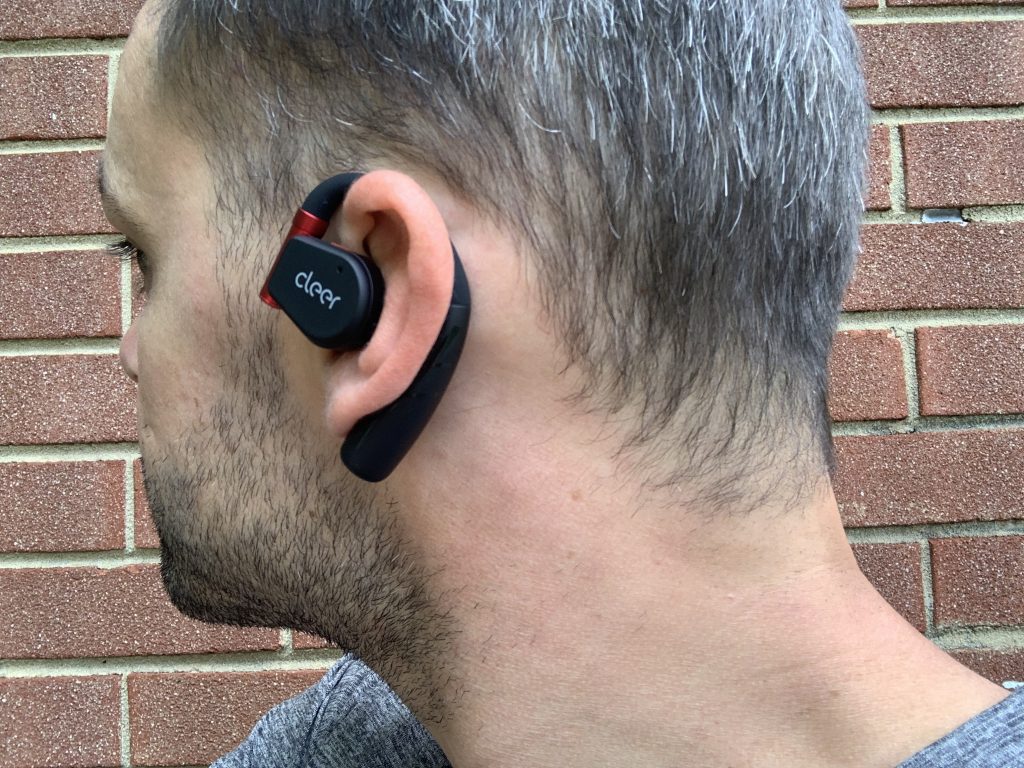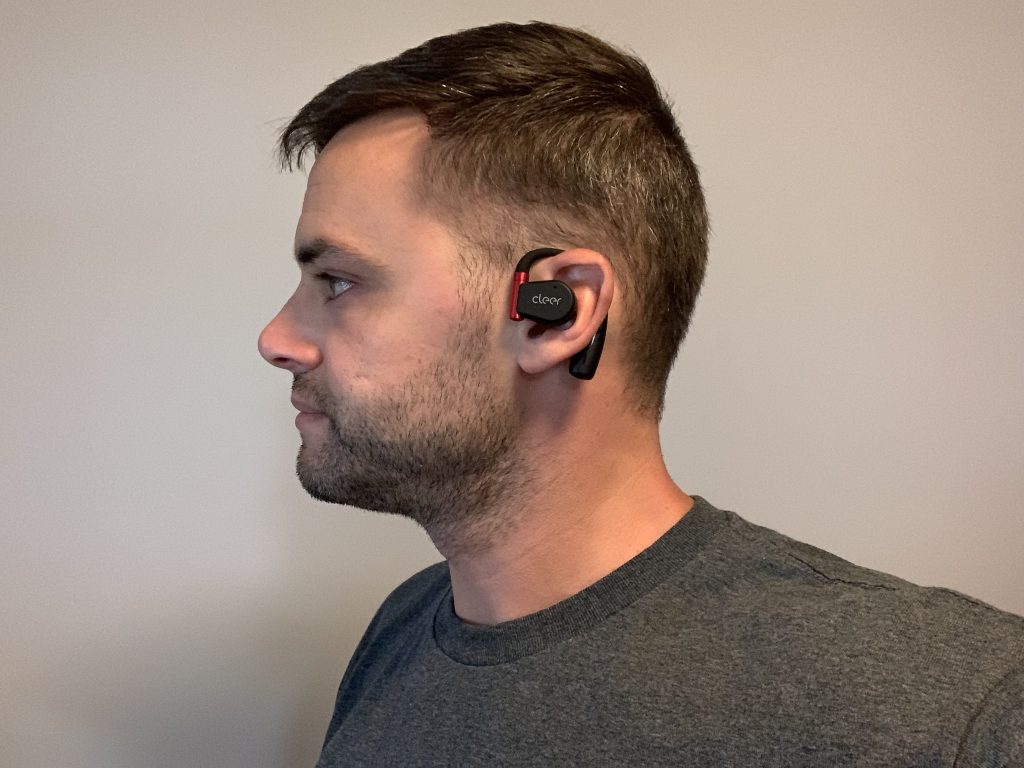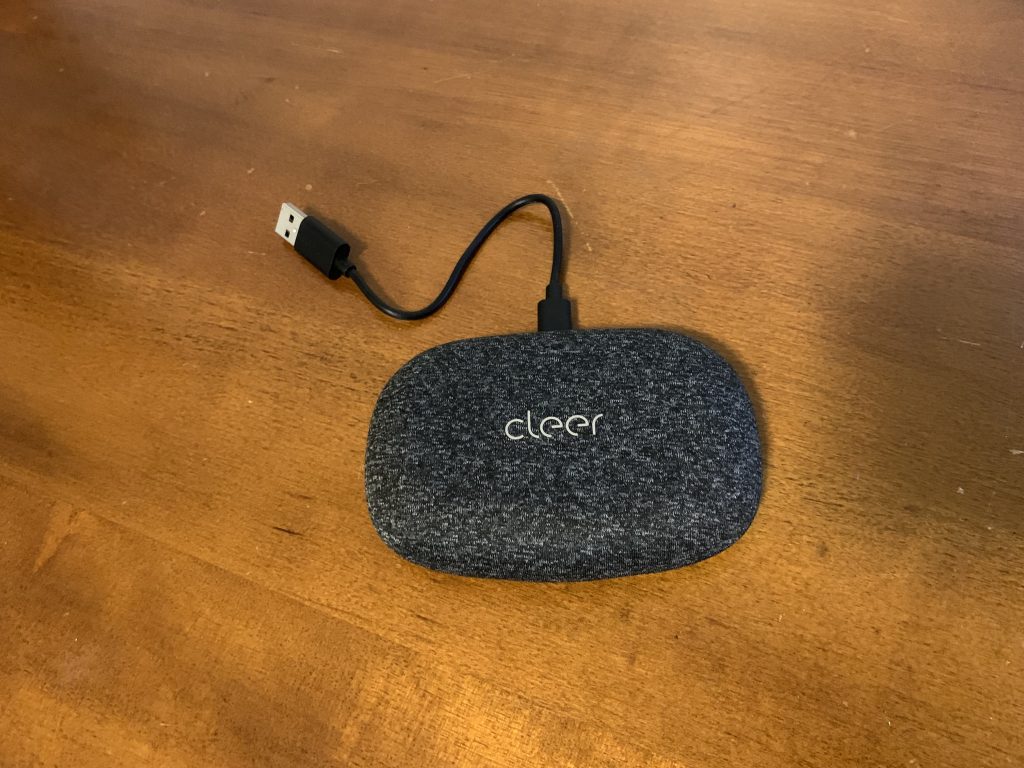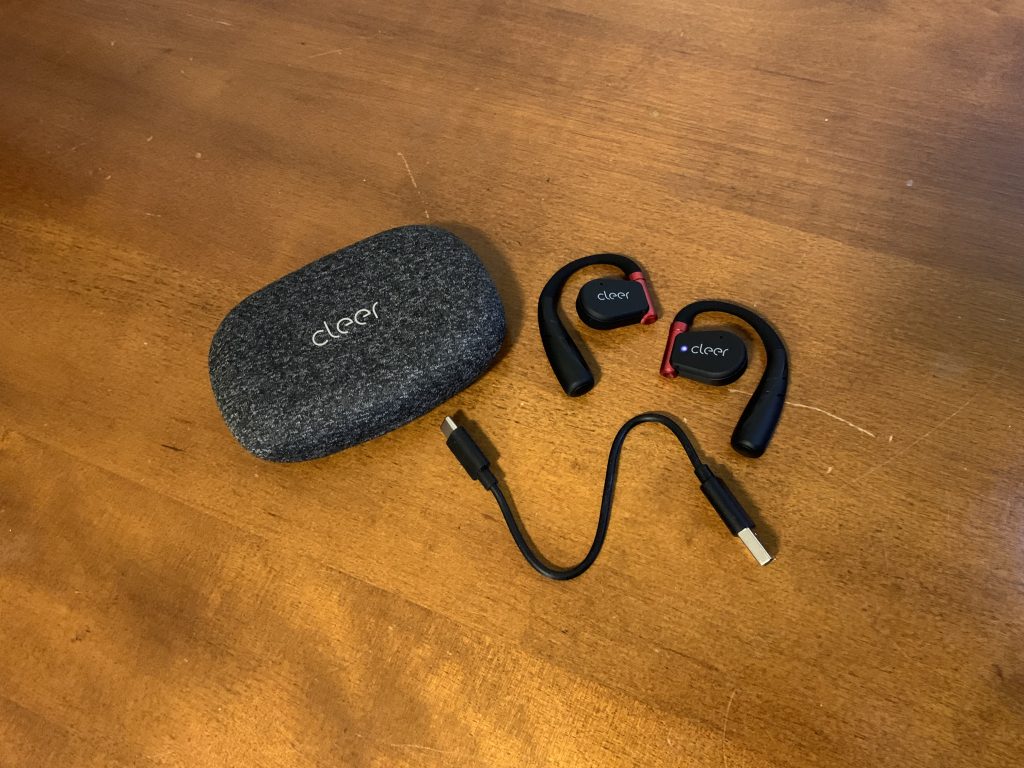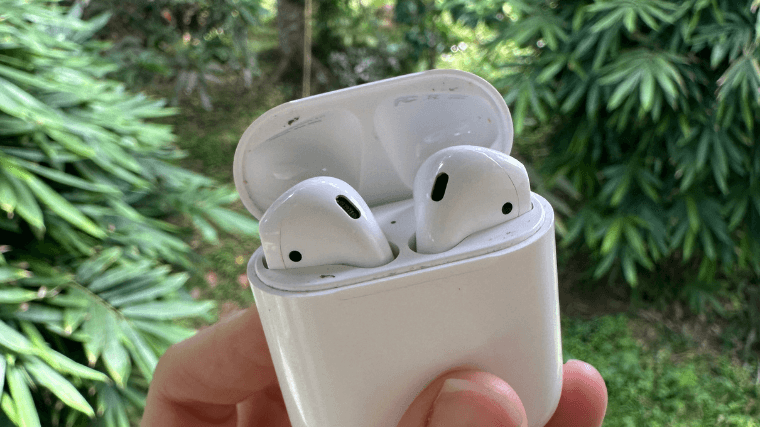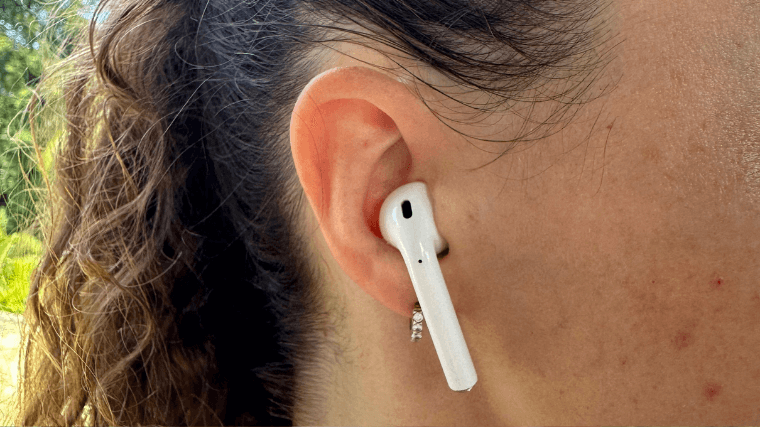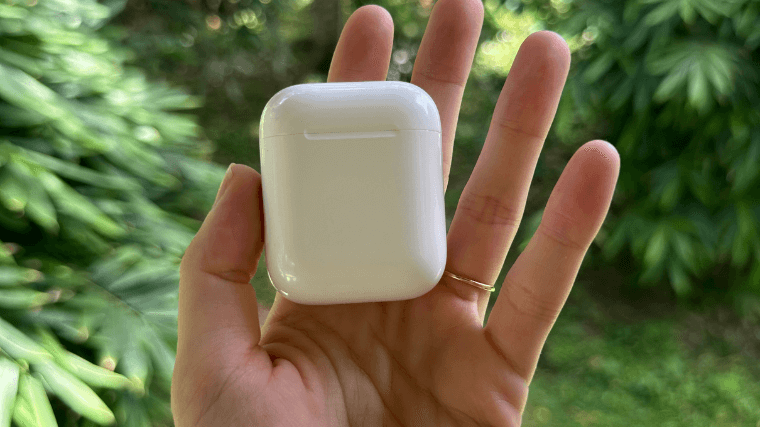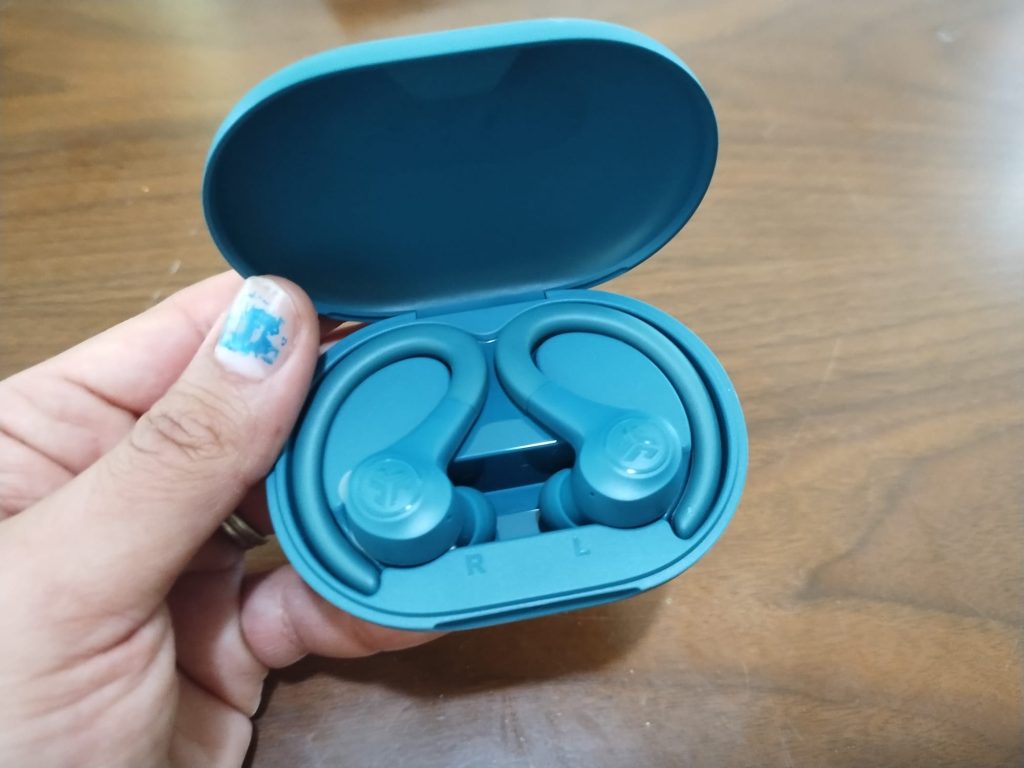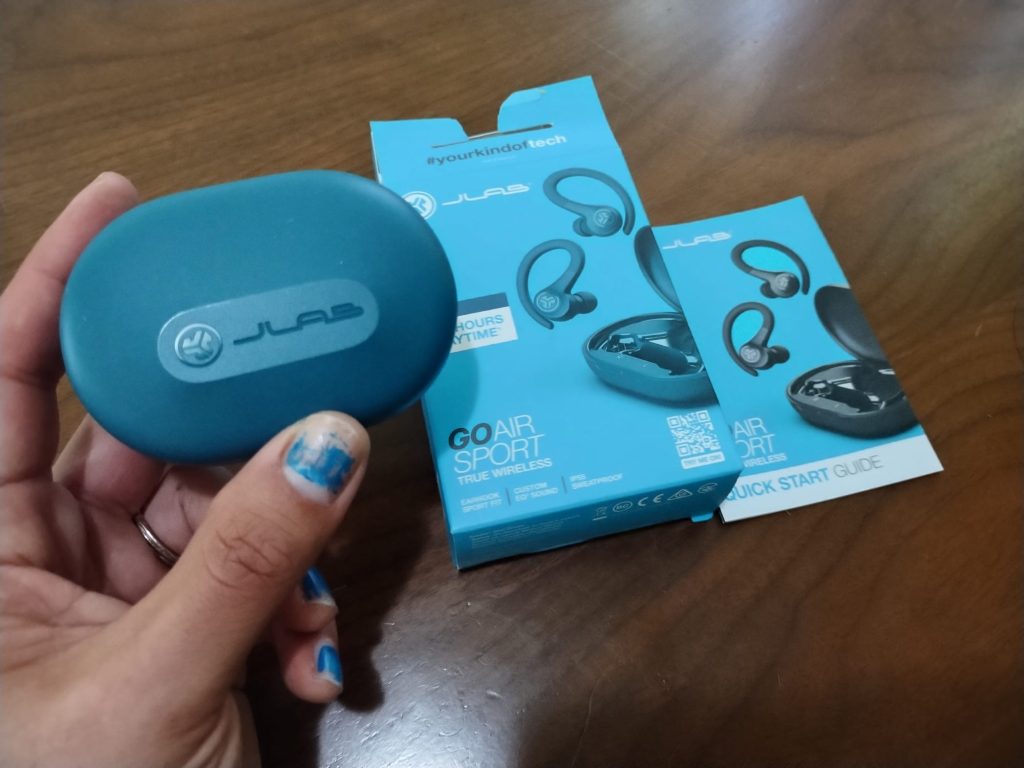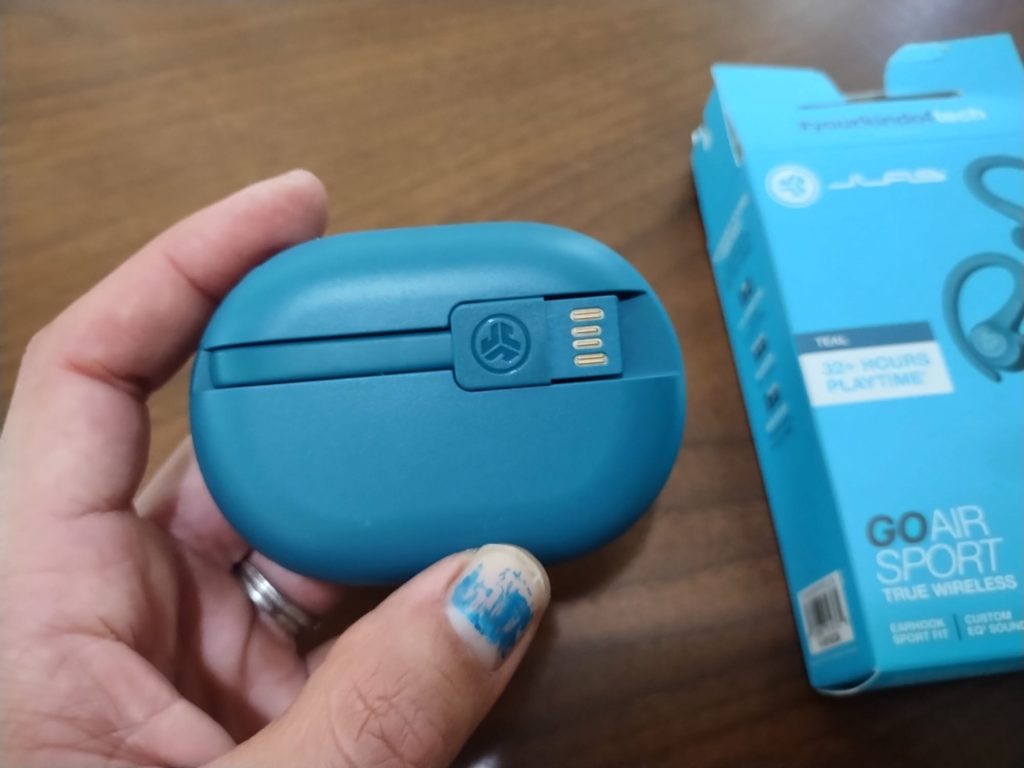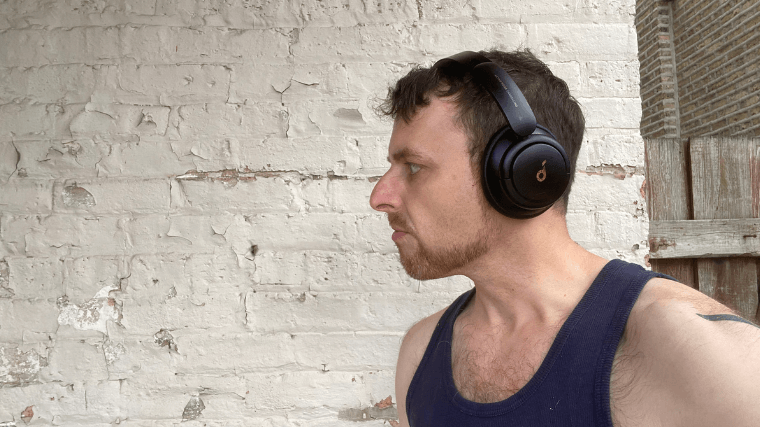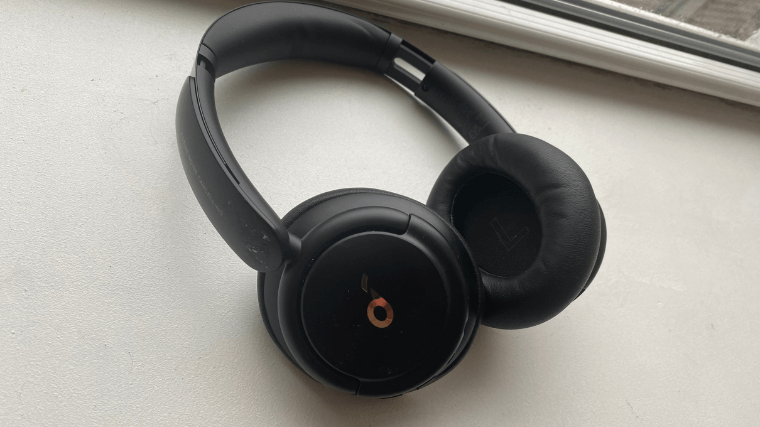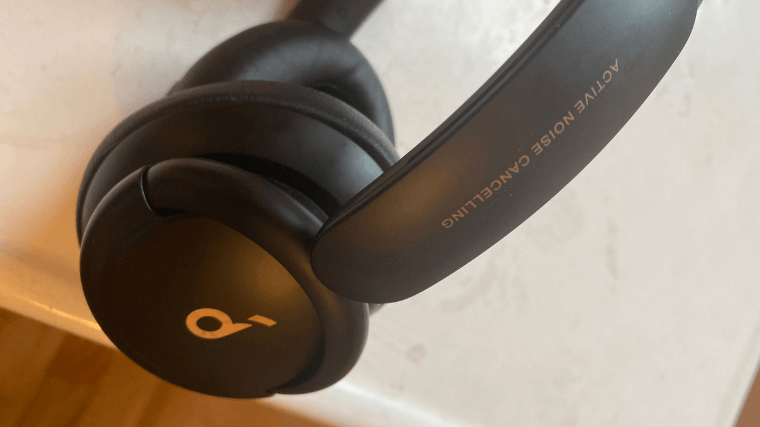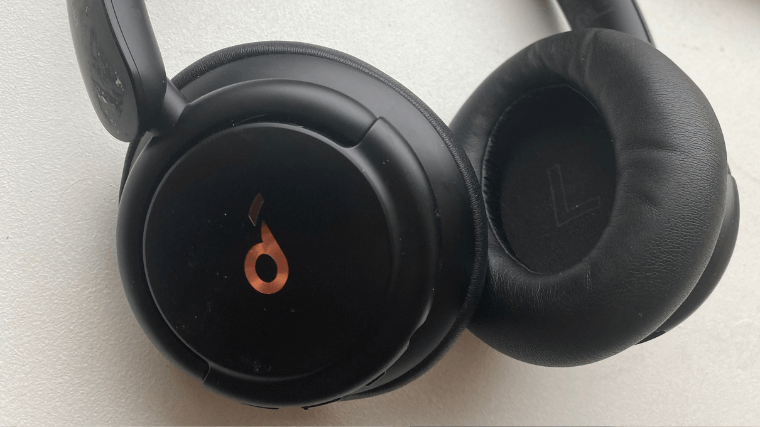All you really need for a good run is a pair of the best running shoes — but to have a great run, chances are, you need some tunes. Whether you crave a beat to pace your tempo runs or to motivate you during speed work, listening to music while you run necessitates a good pair of running headphones.
Unlike those worn to commute or work, running headphones have a very specific and difficult job: to stay put while you’re pounding out miles. The best running headphones will be sweatproof, have a long battery life, and won’t jiggle, bounce, or slide out of your ears. How do you know which models are up to the task? Our team of expert testers has tried many of the best running headphones out there, and come up with this list of seven that go the distance. Simply put, your next run is safe with any of these.
The Best Running Headphones of 2025
- Best Running Headphones Overall: Beats Powerbeats Pro
- Best Wireless Running Headphones: SHOKZ OpenRun Headphones
- Best Running Headphones for Sound Quality: Cleer ARC II Sport
- Best Bluetooth Running Headphones: Bose Ultra Open Earbuds
- Best Budget Running Headphones: JLab Go Air Sport
- Best Over-Ear Headphones for Running: Soundcore Life Q30 Headphones
- Best Running Headphones for Apple Users: Apple AirPods
How We Tested and Chose the Best Running Headphones
The BarBend team is full of experts, including personal trainers, CrossFit-certified coaches, competitive athletes, and endurance runners — and we put that knowledge and experience to work whether we’re testing gear, equipment, or workout tech. To arrive at these seven picks, we hands-on tested more than 15 different pairs of running headphones over many miles, then scored each on a scale of 1 (not great) to 5 (really great) across several different categories, including functionality and adjustability. For more on how we test products, check out the BarBend Equipment Testing Methodology.
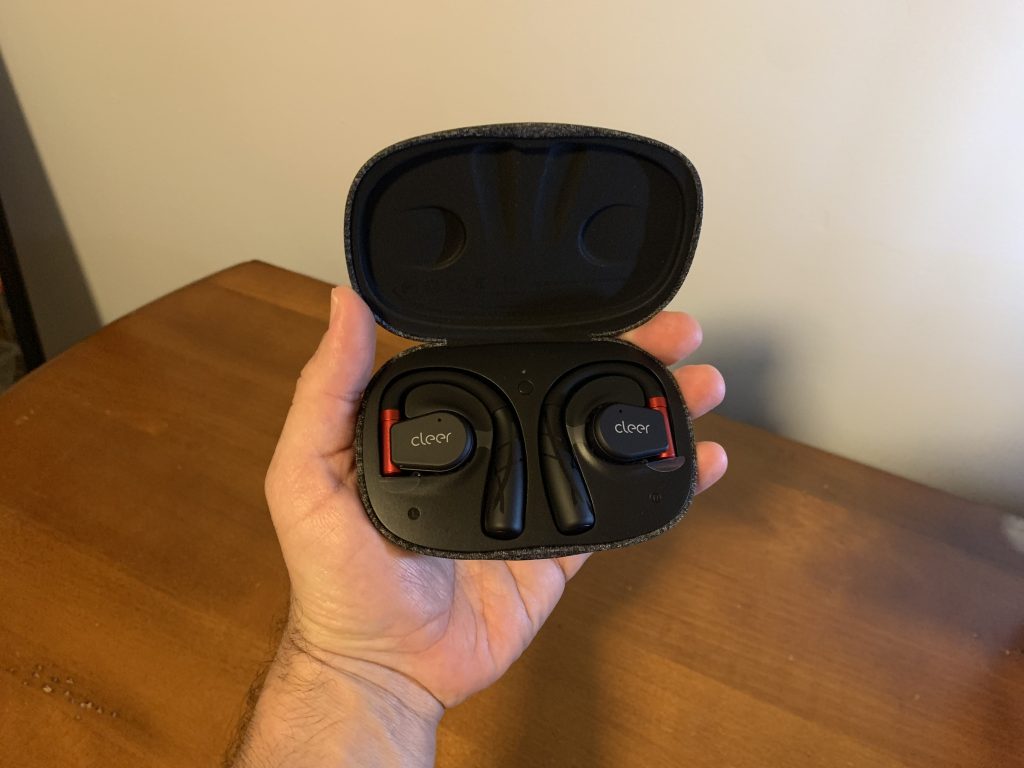
Below are some key elements we looked at when making our picks for the best running headphones.
- Ergonomics and Comfort: Headphone comfort is pretty personal, so we judged these pairs based on both our testers’ experience and what reviewers have to say in order to get the consensus.
- Value: The prices here range from $30 to $300, but cost isn’t always the best indicator of quality. We weighed the features against the price of each pair of running headphones to give you a real-talk evaluation of their value.
- Durability: At the every least, running headphones need to endure miles in the elements — including dust, rain, wind, and sweat — and best-case scenario, they can survive a fall or accidentally being stepped on. We kept this in mind when testing them out.
- Does it Stay in Your Ear?: “Probably the most significant factor to consider is how secure the headphones are. Earbuds that fall out or headphones that jostle too much will annoy you,” notes BarBend expert reviewer Kate Meier, a certified personal trainer. Everyone’s ears are different, but we held these earphones to a high standard when reporting on their staying ability.
Best Running Headphones Overall: Beats Powerbeats Pro
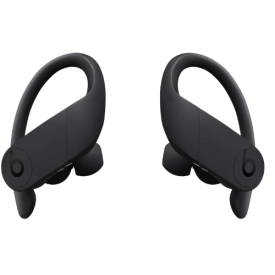
These sweat-resistant headphones hook over years, so you don't have to worry about losing an earbud in the middle of your workout. They also have a built-in microphone, so you can answer calls without your phone on hand.
The hands-down most important feature in a pair of running earphones is their ability to stay on, and this Beats pair, among the best Bluetooth earbuds we’ve tested, has that on lock — literally. They fit securely in-ear (thanks to four different sizes of silicone ear tips) and have adjustable ear hooks to keep them in place while you go the distance. That snug fit also offers passive noise isolation (using the fit of the earbuds to block external noise, versus actively canceling it out with technology), offering great sound quality on the go.
This is why these wireless headphones from Beats have been BarBend editorial member Rosie Borchert’s go-to earbuds for the last three years. She gave them a 4 out of 5 for overall experience and a perfect 5 out of 5 for comfort. “These stay put and are super comfortable,” she says. “I could shake my head around, and they wouldn’t fall out.”
With 9 hours of uninterrupted listening time, they pack plenty of power to last you through two full marathons or — when you factor in the 24 hours of power held in the charging case — multiple weeks of training for a marathon. While not completely waterproof, they are water- and sweat-resistant. They also boast Class 1 Bluetooth technology, which ensures minimal connection issues. Borchert rated them a 4 out of 5 for durability and functionality.
Both wireless earbuds have volume and track controls, voice-activated Siri, and sensors to auto play or pause when they’re put in or taken out of your ear. One downside, though, is that they’re almost too capable. “I’ve had these things for years and I still bumble around trying to figure out what the buttons do,” Borchert says. “I wish [the controls were] a little bit more simple.”
These Beats headphones are compatible with both iOS and Android, but because Apple acquired Beats back in 2014, they have an Apple H1 chip and integrate pretty seamlessly with iPhones. You can see each earbud’s battery life on the screen when they’re connected, share playlists with a friend, and connect quickly to any Apple device. All around, they’re the best running headphones we’ve tested. At $250, though, they aren’t cheap.
Best Wireless Running Headphones: SHOKZ OpenRun Headphones
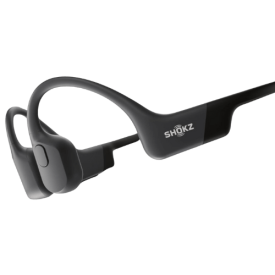
These open-ear headphones work through bone conduction, allowing you to hear your surroundings even while playing music. They are also completely sweat- and water-proof.
Looking for a pair of headphones — not earbuds — that aren’t over-ear or connected to pesky wires? You might like the SHOKZ OpenRun headphones, which are sleek, waterproof, and totally wireless.
These Bluetooth headphones use patented bone-conduction technology to transmit sound directly to your inner ear via vibrations on your cheekbones. The biggest benefit to this tech is that you can listen to playlists without blocking out the sounds of what’s going on around you — a huge perk for people concerned about having their head in the clouds when running at night, on busy roads, or perilous trails in the Amazon rainforest.
“I’ve been using these headphones for about five years now, primarily for cycling and running workouts and when I need to be aware of my surroundings,” says BarBend editorial member Rosie Borchert, who scored them a 4 out of 5 for overall experience and 5 out of 5 for durability. “They’re still going strong after five years and countless workouts.”
Not to mention, they’re completely sweat- and waterproof, so you don’t need to worry about running with these in a heat wave or the rain.
That said, the audio quality of bone conduction doesn’t match up with what you’ll get from headphones or earbuds that transmit audio the old-fashioned way. “These are great for a very specific purpose, and anything outside of that they just don’t compare to other headphones,” Borchert says. “When I’ve tried to listen to podcasts with these and I’m outdoors cycling, I can’t understand a word. But in a quiet setting, I can still hear the podcast.”
The microphone is surprisingly great for calls, and the button controls are easy to master, so all things considered, the SHOKZ scored a 4 out of 5 for functionality.
Another cool feature of the SHOKZ is their Quick Charge ability. With a full charge, you have up to eight hours of listening and calls, but a 10-minute quick charge will get you up to 1.5 hours of battery life — clutch for when you forgot to charge them, but are hoping to head out ASAP for a workout.
Best Running Headphones for Sound Quality: Cleer ARC II Sport
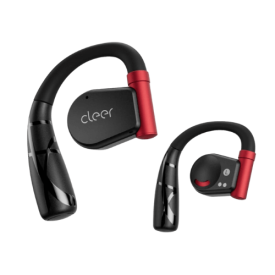
Cleer Arc II headphones fit snug over your ear and won't shift around or fall off while you train. These are compatible with both iPhone and Android, too.
Normally, you need to compromise on sound quality to use open-ear headphones, but not with this pair of Cleer ARC II Sport headphones. “Because the speaker isn’t inserted into the ear like typical earbuds, I expected the sound to be less immersive, but they sounded as good as my AirPods Pro,” says our tester, BarBend editorial member Matt Cummings. “It’s almost like a tiny speaker directed at your ear, as opposed to wedging into your ear.” And because they’re open-ear, you can still hear your surroundings for a safer experience whether you’re road- or trail-running.
Cummings adds that it’s not just the default sound quality that’s great. You can really customize your auditory experience in the app and change the controls, which include hands-free actions, like nodding to pause or turning your head to skip a song. Thanks to these features, Cummings gave the Cleer ARC II Sport headphones a perfect 5 out of 5 for functionality, adjustments, and his experience using the app.
One of the only complaints he had was about the comfortability, giving them a 4 out of 5. “The bar that reaches behind the ear to secure it was slightly uncomfortable,” he said. “During my runs, I also noticed some bouncing because they weren’t quite a perfect fit. It is a flexible, rubber material, but there aren’t incremental adjustments to snuggle up to your ear. It was comfortable, just not perfect.”
If you’re looking for an open-ear headphone model to run in, but don’t want to sacrifice hearing your podcasts word-for-word or feeling the punchy bass of your favorite music, Cleer ARC II Sport could be a good fit.
[Related: Jogging vs. Running]
Best Bluetooth Running Headphones: Bose Ultra Open Earbuds
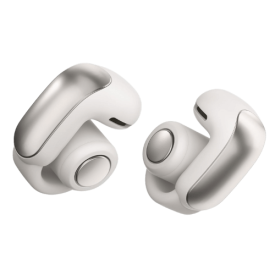
These open headphones allow immersive audio, so you can be aware of your surroundings while running on your favorite trail or walking down a busy intersection. They also pack about 48 hours of battery life.
If you like the idea of open-ear headphones and have an eye for design, turn your attention to these futuristic Ultra Open Earbuds from Bose. With Bluetooth 5.3 and multipoint connectivity, you can connect to multiple devices at once, and switch from one to the other seamlessly — then take them out on a run or start a conversation with someone without having to hit any buttons or remove them from your ears.
“These are easily the most comfortable headphones I’ve ever worn (and I’ve tried them all),” says Bojana Galic, marathon runner and BarBend editorial member, who gave them a 5 out of 5 for comfort. “You barely even feel you’re wearing them… I’ll wear them around the house all day like a stylish ear cuff and listen to music or answer calls, but I can still hear people talking to me.”
For cyclists or runners who want to hear the world around them, these are a solid Bluetooth headphone option. “The open-ear design offers a secure fit — I’m never worried about them falling out or shifting while I bike or run. For cycling, especially, I love them because they allow me to hear other riders or cars on the road,” Galic says.
But the downside of open-ear headphones is that they don’t do any noise-canceling. “In a gym setting, where total noise cancellation is preferred, they’re not totally ideal. They do let outdoor noise in, so in a gym, I typically swap these out for my on-ear headphones,” Galic says. However, with the Bose app, you can tailor the EQ settings to your liking.
The price tag is steep at $300, but if you’re interested in the open-ear design and want to try what’s a one-of-a-kind product on the market, you might love them. And the good news is, they should last you a long time — Galic scored them a 5 out of 5 for durability.
Best Budget Running Headphones: JLab Go Air Sport
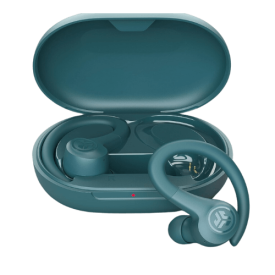
These wireless workout headphones have a 32 hour playing time and feature over-the-ear hooks to help ensure they stay in place while you exercise.
The JLab Go Air Sport earbuds seem to have it all in terms of tech: 32 hours of listening time on one charge (including the case); dirt, water, and sweat resistance; easy-to-use touch controls; three sound modes (Signature, Balanced and Bass Boost); a microphone in each earbud; the ability to use one earbud at a time; and an ergonomic ear hook to keep them locked on your ear. All this, and for just $30, which is well below the average for running headphones.
“I need headphones like these,” says BarBend editorial member and certified personal trainer Alex Polish, ACE CPT, who’s used these running earbuds for over a year. “Air pods without loops to go around my ear just don’t stay in (yes, I’ve tried many), and I sweat too much for complete over-the-ear headphones. So, these have the perfect shape for me. They stay secure and I never have to worry about them going anywhere.” Polish scored them a 5 out of 5 in terms of comfort.
Durability, meanwhile, scored a 4 out of 5. “It’s OK if you sweat a lot during your runs — I certainly do,” they added. “They won’t falter, skip, or break. But don’t put them right back in their case when you get home. Let them sit out and have them completely dry before you put them back in to charge. That’s their big weakness — if you let them charge while wet, they’re more likely to break down.”
[Related: JBL Under Armour Wireless Headphones Review]
The other weakness Polish points out is that they can get “moody” when syncing with different devices. “Since I’ve used them for so long, over time, they come in and out of sync with devices and with each other,” they explain, scoring functionality a 3 out of 5. “If they unsync with one of your devices (your computer, say) to pair with another (your phone), they can sometimes unsync with each other so only one ear works at a time. You kind of have to turn Bluetooth on and off again, as well as putting the headphones back in their case, to reset it. That can be annoying when you’re trying to hit the road.”
Best Over-Ear Headphones for Running: Soundcore Life Q30 Headphones
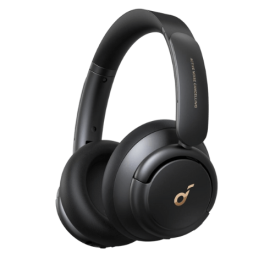
This lightweight pair of over-ear headphones has three modes of noise cancellation to suit different environments, as well as up to 60 hours of battery life. The earcups are super comfortable due to their memory foam padding.
Running in over-the-ear headphones is a personal thing; some people love it; some people can’t stand it. If you’ve found that your ears are earbud-averse or want something that offers a little more coverage from the world, though, a pair of over-ear headphones could level up your runs. Our tester, BarBend editorial member Randall Colburn, is a fan of these Soundcore Life Q30 headphones, giving them a 4 out of 5 overall.
One of the standout features of this model is that they offer great sound quality and varying levels of Active Noise Cancellation (ANC) so you can still hear what’s going on around you outside or almost totally block it out during treadmill HIIT workouts indoors. “Using the Transparency Mode, I still feel as if I’m hearing enough of the world around me to feel safe. And when I use the Indoor or Transport modes, I’m really cocooned away from the world,” Colburn says, giving them a 4 out of 5 for adjustments and a 5 out of 5 for functionality.
“You can swap between them with a button on one of the ear cups,” he adds. “On the other, you can pause and play your audio, or adjust the volume. I do wish I could swap tracks via the headphones, but these don’t offer that option.” You can control a lot from the headphones, but Soundcore’s app allows you to customize further.
As for comfort, the Q30s have faux leather-covered memory foam ear cups and an adjustable headband. This lets you fit the headphones to your head size, which helps keep them from moving while you’re running. “It barely moves when I tighten it to my noggin, so I’ve really had no issues with them bouncing or slipping,” Colburn says.
[Related: How To Build Stamina for Running]
Just note that the ear cups can get pretty sweaty; you’ll want to clean them off after working out, and manage your expectations around their life expectancy if you sweat a lot. Soundcore doesn’t offer a waterproof or water-resistance rating, which means they may not do well if they get too wet.
All things considered, you’re getting a pair of Bluetooth, noise-canceling running headphones for under $100 — that’s a steal.
Best Running Headphones for Apple Users: Apple Airpods
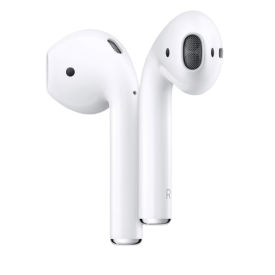
A go-to in the Apple age, these AirPods deliver quality sound that automatically pauses whenever you remove them from your ears. They're also compatible with Siri for hands-free assistance.
If you run with your iPhone (or want to), there’s a good chance the best running headphones for you are a pair of AirPods. I’ve been wearing the AirPods Generation 2 for five years now, and despite being able to test many other workout headphones as a fitness writer and editor, this pair has remained my tried and true.
I have small ears, and I’ve found most in-ear headphones to be wildly uncomfortable or straight-up impossible to keep in my ear. Even the best contenders survived other activities but slowly slipped out while running. For me, the original AirPods fit well, feel super lightweight, and don’t budge while running or doing burpees, which is why I give them a 5 out of 5 for comfort.
Otherwise, the standout feature is that they play so well with my other Apple devices. You can seamlessly transfer music or calls from device to device, share audio with a second pair of AirPods, control your music via an Apple Watch, and check the battery levels or manage the touch-control settings right within iOS.
They use the same Lightning cable an iPhone needs to charge, though with 6 hours of battery life and 18 more in the case, I don’t find myself needing to do so often. Of course, many earbuds promise many more hours of battery life on a full charge, so consider that when browning your options.
In all, I give them 4 out of 5 for functionality, docking a point only for the fact that they don’t noise-cancel. That’s not much of a problem while running, since I like to hear what’s happening around me, but in noisy places like subways or planes, the audio can be hard to hear. (If you want audio customization or noise-canceling, the other AirPod models have more bells and whistles.)
My pair has lasted me years, but I’d give them a 3 out of 5 for durability. For one, the buds are pretty dainty; if you were to accidentally step on one with shoes on, they’d probably bust. Second, when dropped, the magnetic-closure case tends to pop open and the earbuds scatter. Still, years later, my case and buds have had zero issues, are in one piece, and ready to be worn for many more miles.
Benefits of Running Headphones
The benefits of running are pretty juicy on their own, but you get even more perks when you pop on a pair of running headphones — namely, all of the below.
- Hands-Free Running: “A benefit to a good pair of headphones made for running is that they won’t get in the way of your mobility,” says BarBend expert reviewer Kate Meier. “Running headphones are typically wireless, which means you won’t get caught on anything as you move.”
- Noise Cancellation: Noise-canceling headphones may help block out distractions and improve your focus on the task at hand. (1) If you’re running outdoors, they can pose a safety risk by blocking out the sounds of your surroundings, but in the gym, they can help you remain laser-focused on your training.
- Exercise Entertainment: “Perhaps the biggest benefit to running headphones is having the ability to listen to music, which can be motivating and keep you tuned in, so to speak, to your workout,” Meier says. And she’s right, since research suggests that listening to music can help you enjoy your workout more. (2) You aren’t limited to music, either. Cue up a podcast to learn something new or lose yourself in an audiobook to make the miles fly by.
- Boosted Performance: Music doesn’t only make your workout more enjoyable, it also improves your physical performance and physiological efficiency and reduces your perceived level of exertion. (3) When running, specifically, listening to fast-paced music can help you push your pace without feeling like you’re working harder, according to a small 2014 study. (4)
How Much Do Running Headphones Cost?
There’s no need to spend hundos on a pair of headphones. You can get great running headphones for as little as $30, splurge for ones upwards of $300, or land anywhere in between. (And keep in mind, it’s pretty easy to find tech on sale, especially during events like Prime Day or Black Friday.)
| Best Running Headphones Overall | Beats Powerbeats Pro | $249.95 |
| Best Wireless Running Headphones | Shokz OpenRun Headphones | $129.95 |
| Best Running Headphones for Sound Quality | Cleer ARC II Sport | $169.99 |
| Best Bluetooth Running Headphones | Bose Ultra Open Earbuds | $299.00 |
| Best Budget Running Headphones | JLab Go Air Sport | $29.88 |
| Best Over-Ear Headphones for Running | Soundcore Life Q30 Headphones | $85.99 |
| Best Running Headphones for Apple Users | Apple AirPods | $129.00 |
What to Consider Before Buying Running Headphones
Our running headphone recommendations are only helpful if they’re what you’re looking for. To choose a pair, you’ll ultimately have to do some self-reflection and determine your needs, which features are most important, and the type of workout headphones that best fit those qualifications. Below are a few key factors to consider.
Comfort
If headphones aren’t comfortable or don’t stay in or on your ears, you won’t enjoy running in them. We vetted our picks with a close eye on those factors, but unfortunately, the only way to know for sure if a pair works for you is to try them out.
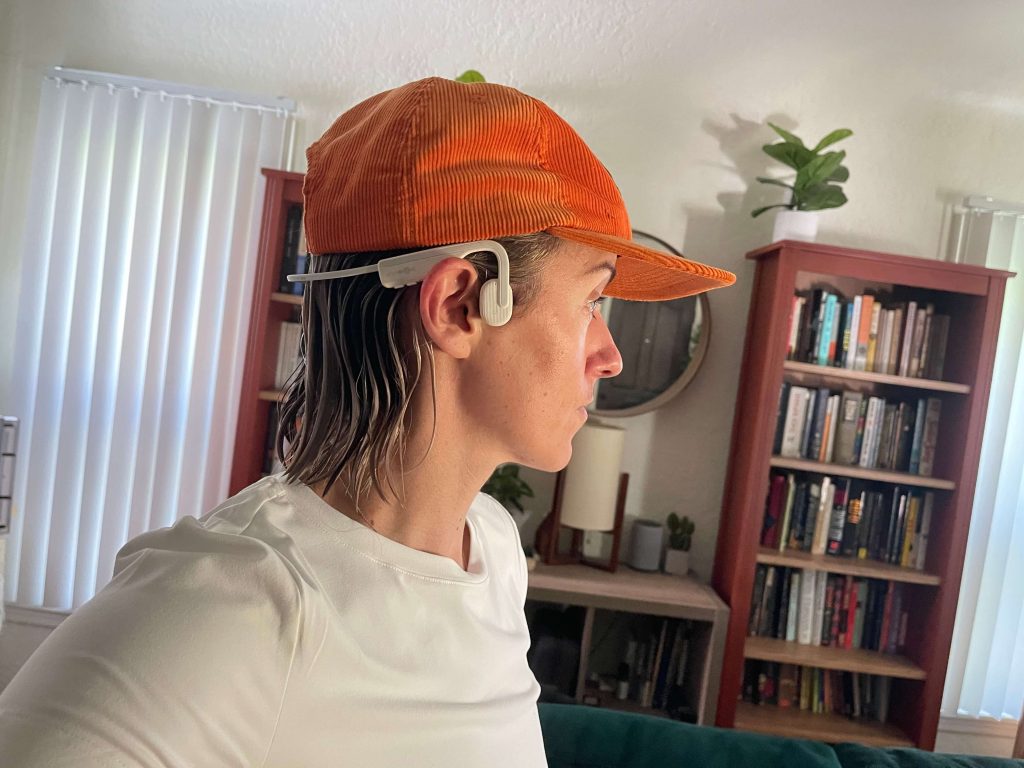
It can help to buy a pair that’s adjustable in some way — for example, with different-sized silicone tips — but beyond that, comfort is largely up to personal preference. “Some people don’t like earbuds, some people can’t stand to have large headphones straddling their heads. Pick a style you’ll actually use and be comfortable with, or else it’s a waste of money,” says Kate Meier, our expert reviewer.
Connectivity
You’ll want to make sure your headphones play nice with your devices. This makes everything easier, including setup, connection, and disconnection, as well as the use of virtual assistants and other features.
If you’re an Apple user, AirPods aren’t your only choice. Since Apple acquired Beats in 2014, their headphones often include Apple’s chip for easy connection with iOS devices. Many other headphone brands — including Bose, JBL, and Sony — also have apps to help improve the experience on both iOS and Android devices. They can, however, sometimes make things more complicated by adding an extra step and potential failure point.
Adjustability
Adjustability can help with comfort, but it’s also a factor in terms of audio quality and sound experience. Do you want a pair of running headphones that’s always noise-canceling, that gives you the ability to turn noise-canceling on and off, or ones that allow you to hear ambient sound? Audiophiles may want to play with the sound balance, a feature not available in all models here, but that can be done with the higher-end ones.
Safety
You should also consider safety when shopping for a pair of running headphones. “Noise-canceling headphones may sound great, but they may not be the best option for people running outside,” Meier says. “It’s imperative to be aware of your surroundings, whether you’re on the streets, on a trail, or even running on a treadmill at the gym. If your music is too loud, you may miss the warning signs of danger.”

If you run on busy roads, trails, or paths, it may be smart to opt for bone-conduction headphones, ones that aren’t noise-canceling, or an open-ear pair that allows you to hear ambient sound while running. It’s not that you can’t run in noise-canceling headphones, but it may be best to save them for the gym.
Running Headphones FAQs
What are the best running headphones?
In our humble-but-expert opinions, the Beats Powerbeats Pro are some of the best running headphones out there. The ear hooks keep them in place during any type of training (including running, of course), they have a long battery life (9 hours of listening, and 24 with the case), and a decent water resistance rating. After years of use, our tester still finds them to have a secure fit.
What headphones don't fall out when running?
This is going to differ based on your ear shape and size — for example, some people find that in-ear headphones stay put, while others do not. A safe bet is a pair of over-ear headphones, a headset, or earphones with a hook that loops over your ear, holding them in place. “My favorite headphones for running are the ones that have ear hooks best for running because they don’t go anywhere,” says Kate Meier, our expert reviewer. “They may not be the most stylish, but they are the most secure.”
Which Beats earbuds are best for running?
We’ve found the Beats Powerbeats Pro to be the best for running, thanks to their snug fit, good audio quality, and ear hooks that keep them planted in place. They also have a solid waterproof rating, making them great for running in the rain. The runner-up (no pun intended) goes to Beats Fit Pro, which are also designed for working out, but have wing tips that fit snugly into your ear canal rather than looping over the top.
Which is better for running, headphones or earbuds?
The reality is that people tend to use the word “headphones” to mean both. If we take the word literally, which is best for running? Well, bulky over-ear headphones look cool, but can be heavy, hot, and jostle as you run. For this reason, most runners prefer wearing earbuds or slim headphones like AfterShokz, which both have a lighter feel on your head, don’t get as sweaty, and tend to be better at staying in place.
References
- Molesworth, B. R., Burgess, M., & Kwon, D. (2012). The use of noise cancelling headphones to improve concurrent task performance in a noisy environment. Applied Acoustics, 74(1), 110-115.
- Stork, M. J., Kwan, M. Y., Gibala, M. J., & Martin Ginis, K. A. (2015). Music enhances performance and perceived enjoyment of sprint interval exercise. Medicine and science in sports and exercise, 47(5), 1052–1060. https://doi.org/10.1249/MSS.0000000000000494
- Terry, P. C., Karageorghis, C. I., Curran, M. L., Martin, O. V., & Parsons-Smith, R. L. (2020). Effects of music in exercise and sport: A meta-analytic review. Psychological bulletin, 146(2), 91–117. https://doi.org/10.1037/bul0000216
- Lee S, Kimmerly D. (2014). Influence of music on maximal self-paced running performance and passive post-exercise recovery rate. The Journal of Sports Medicine and Physical Fitness, PMID: 25359134.
